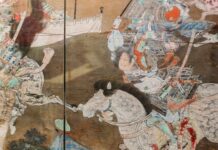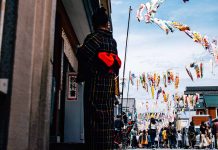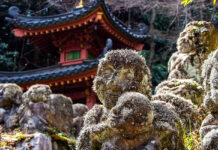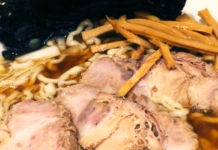Japan is abundant in traditional crafts, with each region, and even each prefecture being home to a geographically unique form of making. Kumamoto prefecture is no exception, and Kumamoto city celebrates the region’s rich material culture and heritage at the Kumamoto Prefectural Traditional Crafts Centre.
While Kumamoto also has a ‘folk crafts’ museum (referred to in Japanese as a ‘mingeikan’), ‘traditional crafts’ are in a slightly different (but often overlapping) category. Although folk crafts are simply everyday utility items made by regular (non-craftsperson) citizens, traditional crafts are made by craftspeople with a specific skill set. Traditional crafts may be highly artisanal (something you’d see at the Kyoto Museum of Crafts and Design), or they may be simple and homely (closer to traditional ‘folk crafts’) – but the maker will always be established within their niche, and often part of a master-apprentice lineage.
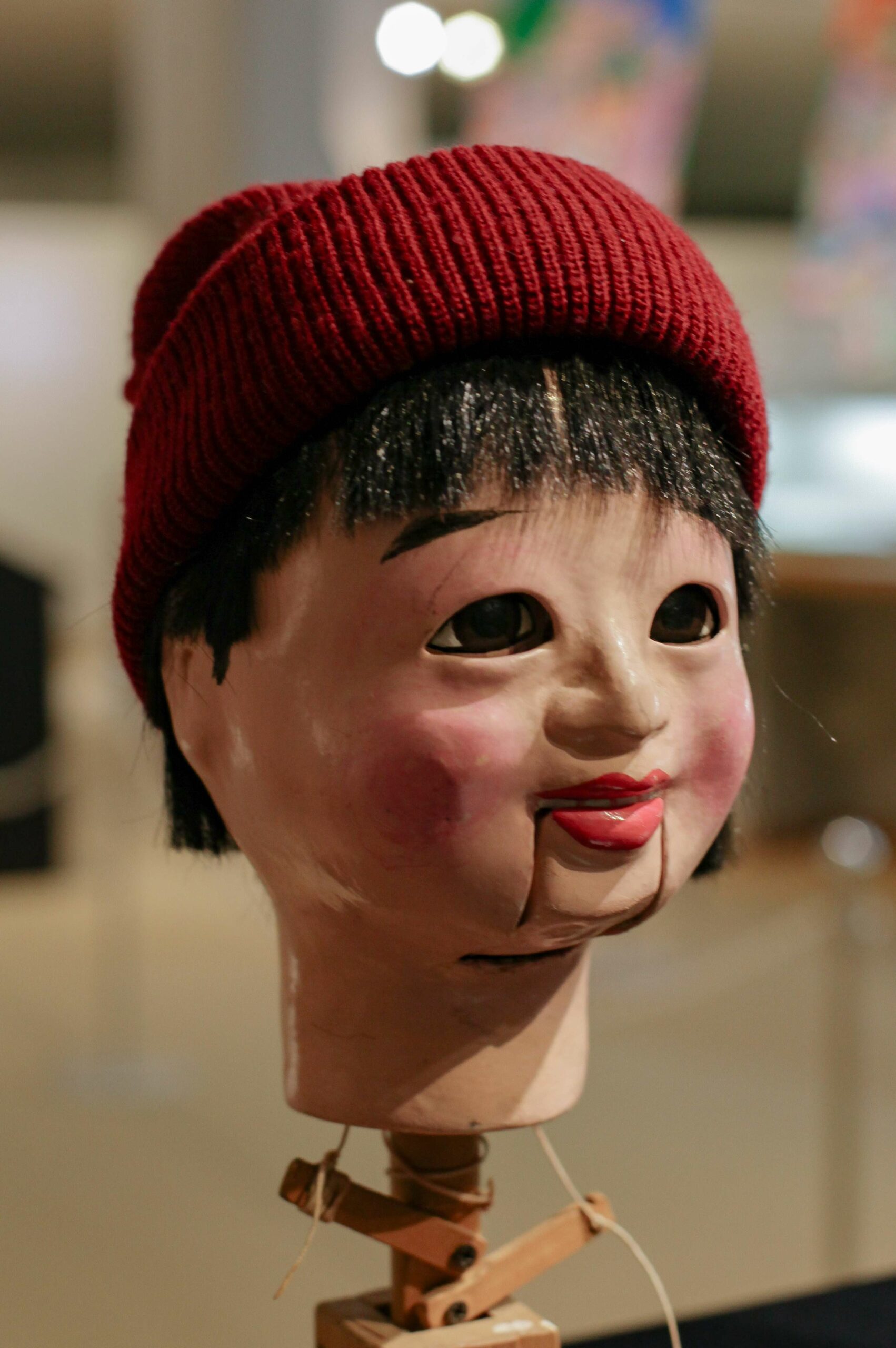
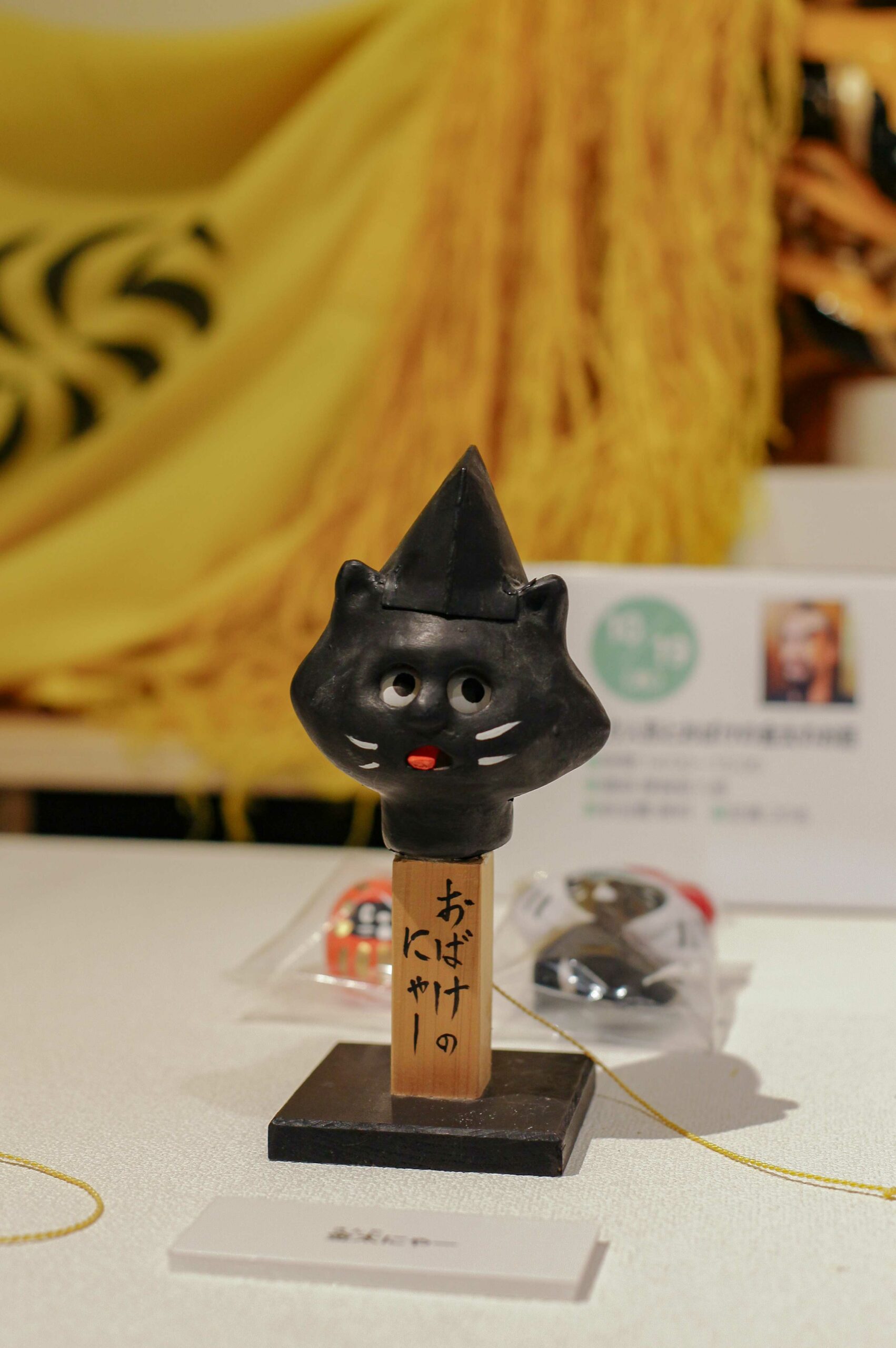
Kumamoto’s traditional crafts are unique and diverse, including everything from roughly-carved folk toys and talismans, to complex ornate ‘Higo-style’ metal inlays. The Kumamoto Prefectural Traditional Crafts Centre will introduce visitors to all of these historical crafts, ranging from the intricate to the joyful, and to the downright strange.
The Kumamoto Prefectural Traditional Crafts Centre is a three-storey building, consisting of a small basement exhibition space, a ground floor with an enormous shop, and an expansive display hall on the top floor. The upper hall is flooded with natural light, with an expansive collection of Kumamoto prefecture’s crafts. Puppets, dyed banners, folded steel, ceramics, roof tiles, swords, toys – every category of craft is represented with beautiful examples of the maker’s expertise.
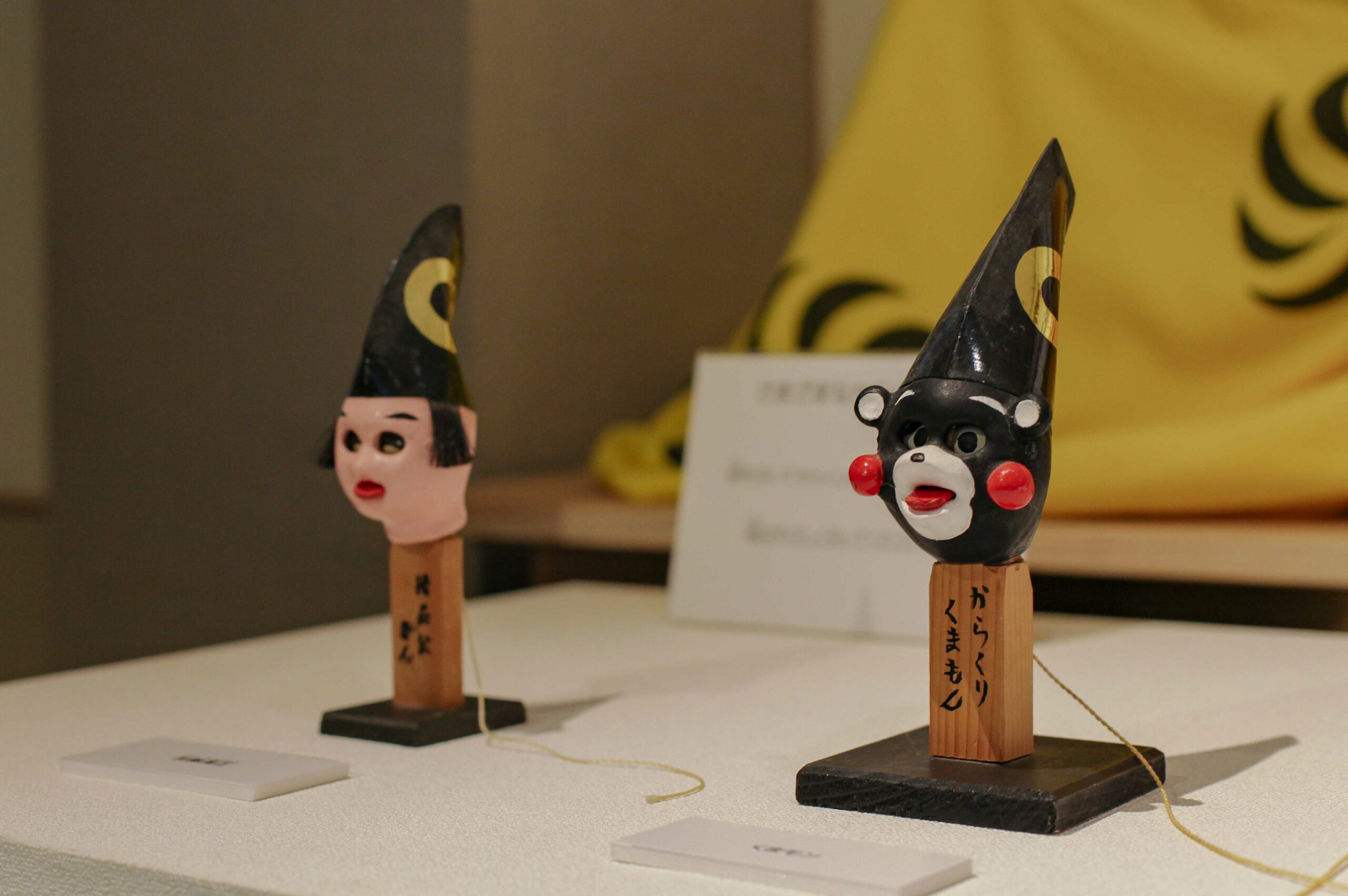
The centre’s in-house shop sells crafts, homeware and jewellery from across Kumamoto prefecture. All of the items are handmade by named artisans and craftspeople, ranging from tiny ‘konoha-zaru’ (rustic clay monkey talismans) to knives from legendary ‘steel town’, Kawashiri. There’s something for everyone’s budget, and visitors can be safe in the knowledge that their purchase supports the continuation of craft heritage in Kumamoto.
At the time of writing in October 2023, Kumamoto Prefectural Traditional Crafts Centre was hosting a major exhibition, titled ‘Traditional Crafts of Kumamoto: The Craftsmen.’ (It’s worth pointing out that Japan’s craft industries are seeing a surge of gender parity in modern times, but ‘craftsman’ is still the most common English translation of the word ‘職人’ [shokunin], which literally means ‘craftsperson’). The exhibition gave special prominence to select makers from Kumamoto prefecture, whose works include gogatsu sekku nobori (May festival flags) and obake no Kinta (‘monster’ or ‘spooky’ Kinta) puppets.
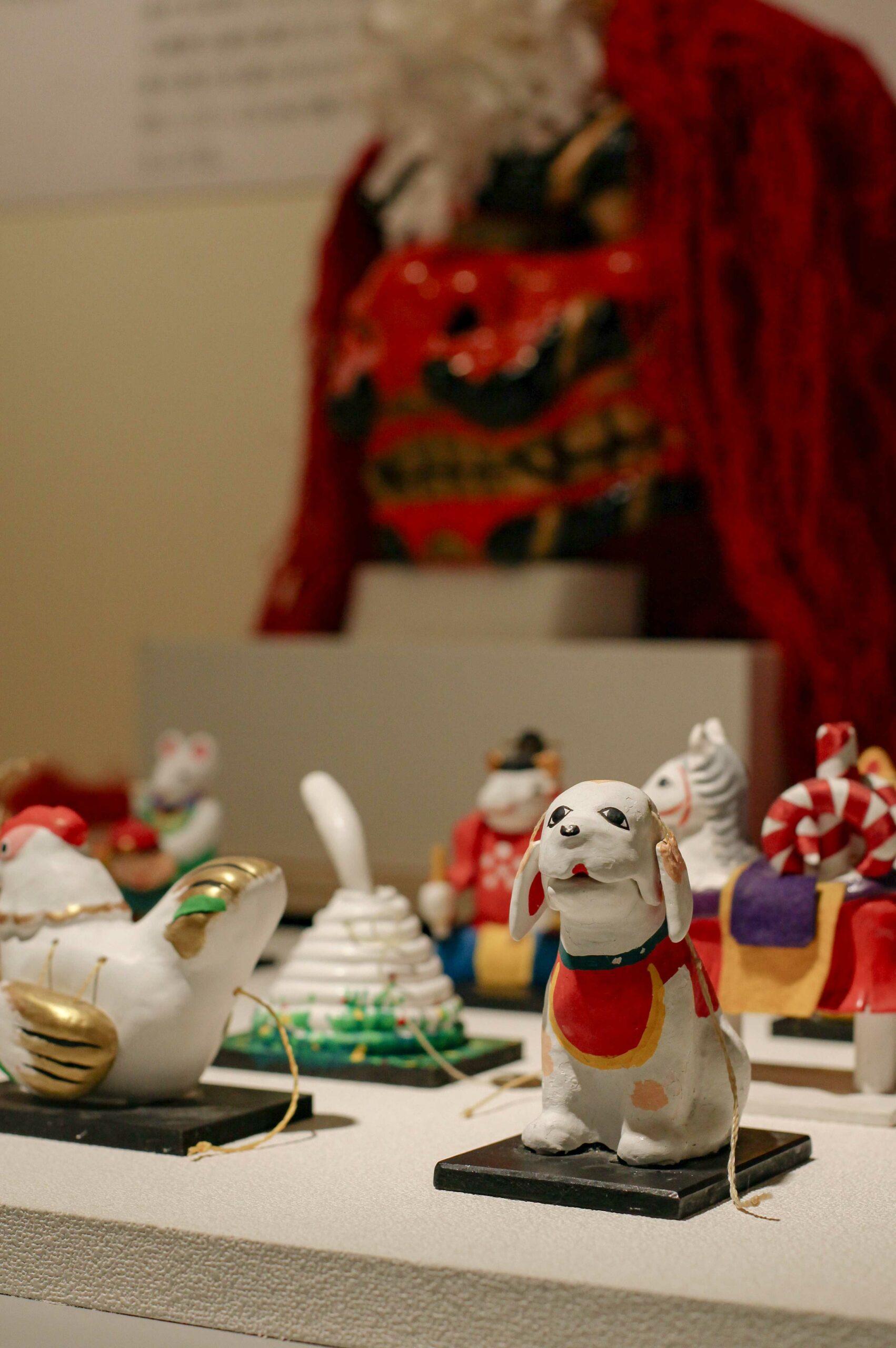

Obake no Kinta puppets have an especially sweet origin story. It’s said that when Kumamoto castle was constructed 400 years ago, a foot soldier named Kinta was garrisoned there. He was known for making faces in order to get a laugh from fellow soldiers and local kids alike. The legend of ‘odoke no Kinta’ (‘funny Kinta’) was passed through generations until, in the 19th century, a local craftsman created a puppet based on the story. The dolls he made quickly became known as ‘obake no Kinta’, and remain a signature work of the Kumamoto region to this day. With fully rotating eyes and a tongue that moves in and out, the puppets toe the ‘cute/creepy’ line exceptionally well.
Taking pride of place in the exhibition of traditional crafts are the gogatsu sekku nobori, soaring up from the floor into the skylight of the hall’s roof. The colours are almost unbelievable, with pinks, greens and oranges dyed in electric neon hues and covered in glitter. The flags depict famous samurai and epic battles, and are traditionally eight metres long, making for a grandiose display of colour and movement when hung next to reams of koinobori (carp flags) for children’s day.

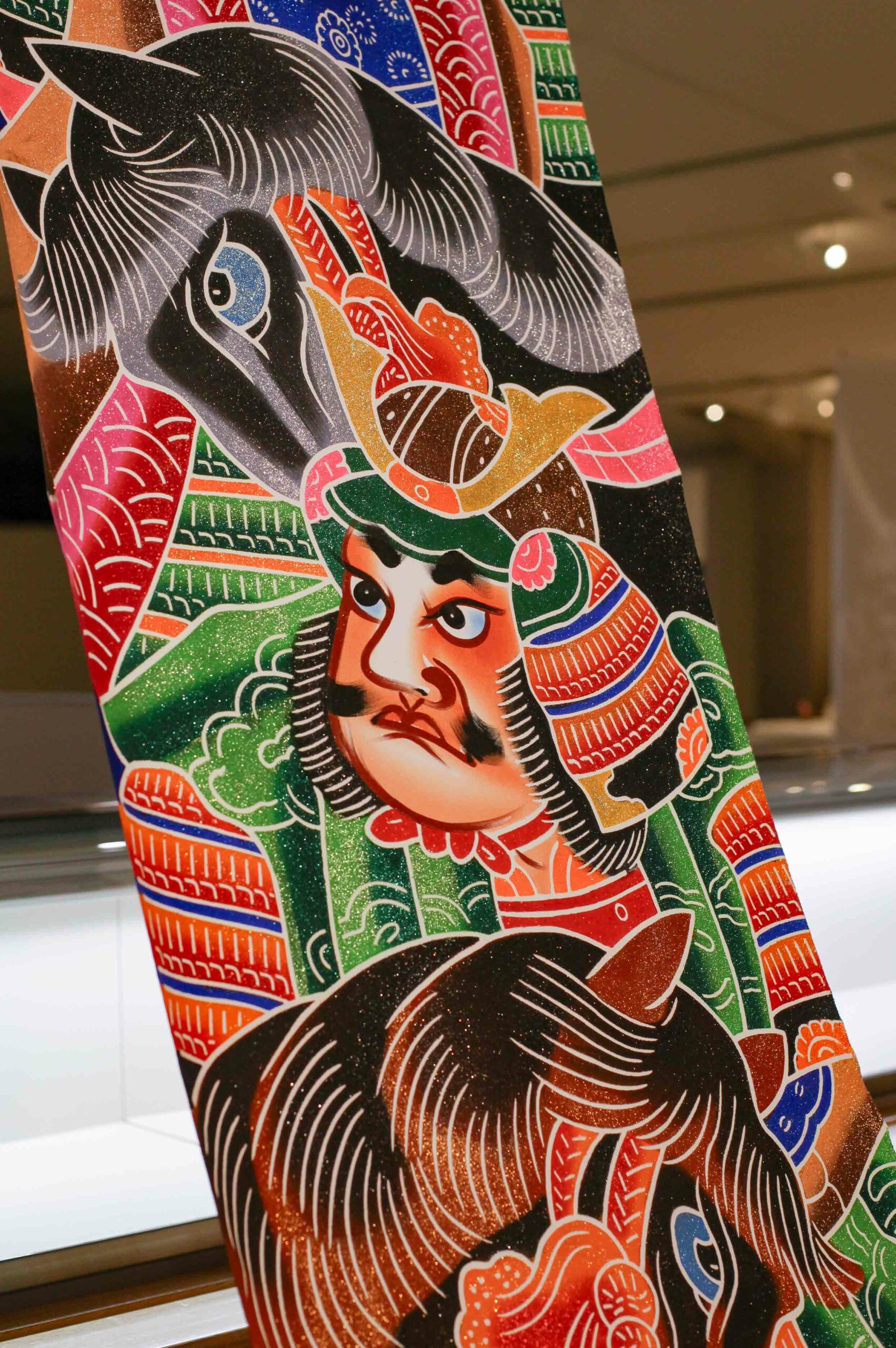
The exhibition also details the making of kawara (roof tiles) and onigawara (demon roof tiles). A familiar sight throughout Japan, onigawara have a similar purpose to European gargoyles, which is chiefly to ward off bad spirits with their ferocious countenance. Temples and traditional residences around Japan are the best place to see onigawara in the wild, often created in the form of ogres, flying komainu (lion-dogs) and the famous shachihoko, a mythical fish-bodied, dragon-faced guardian against fire.
Away from the seasonal display, there’s an entire hall filled with the permanent exhibitions which make up the museum’s ‘traditional crafts’ showcase. Information is provided in Japanese and English, and there’s an English language brochure available, offering in-depth explanations of Kumamoto’s unique handmade wares.

The permanent traditional crafts exhibition covers an enormous range of craftworks, featuring everything from wooden toys to fine ceramics. There’s even a zone dedicated to steel blades, including swords, knives and gardening tools. While the exhibition focuses on specialist crafts, folk crafts are included in the form of dolls and votive items, which are entirely unique to various small villages in Kumamoto prefecture.
With handmade items being completely unique to such small geographical areas, it’s easy to see how travelling through Japan is never boring. It’s the case with food, too; each prefecture is known throughout Japan for a special culinary item, be it Hokkaido’s spider crabs or Osaka’s okonomiyaki (not to be confused with Hiroshima’s entirely different take on okonomiyaki, unless you’re tired of living). Despite Japan’s sense of overarching cultural oneness, the variations in ‘micro-culture’ between the smallest of regions means there’s always something new to discover.
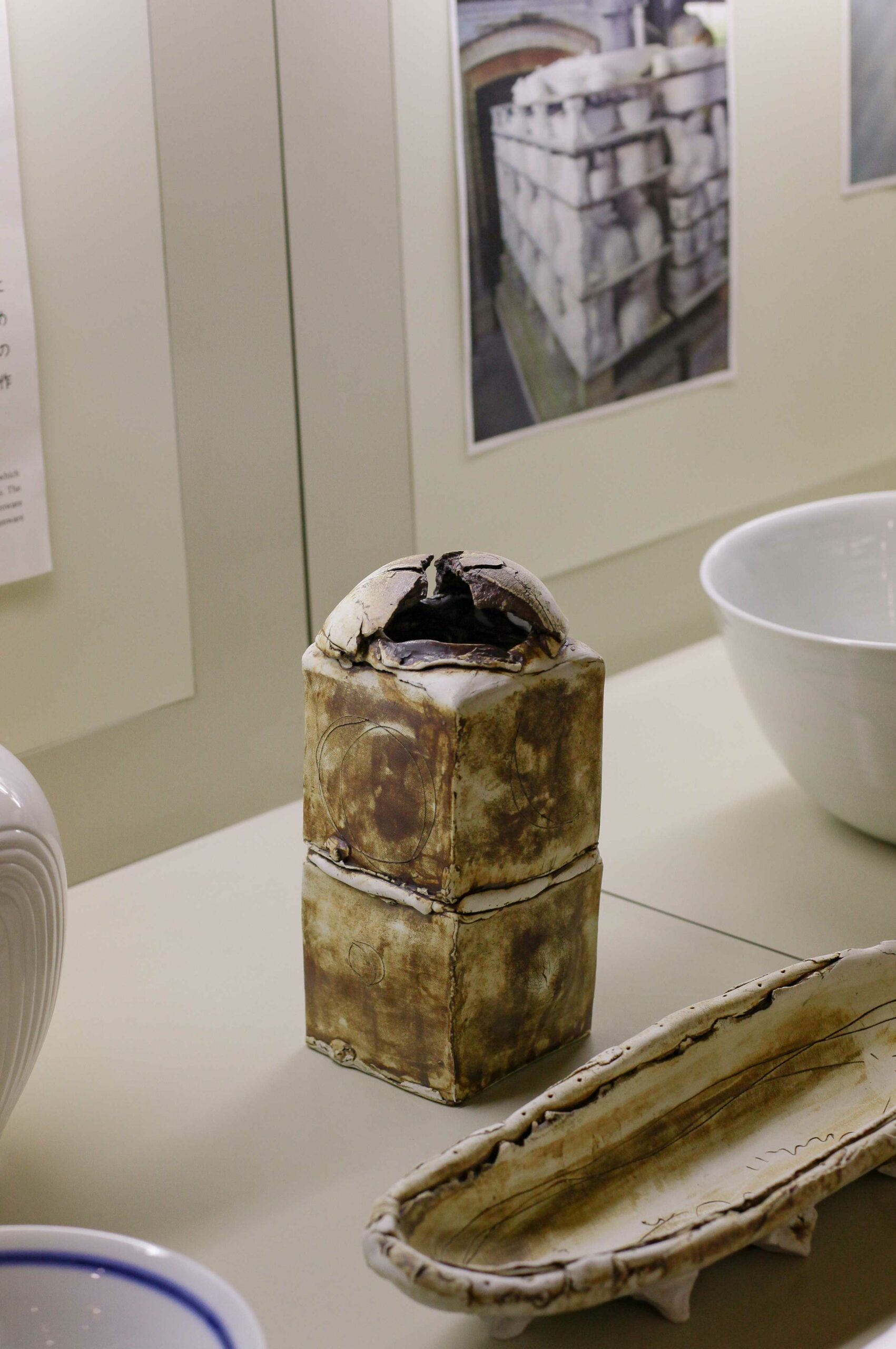

The displays continue throughout the vaulted hall space, with walls dedicated to handcrafted furniture and unique styles of woodworking. There are chairs and stools made from toughened strips of smoke-dyed bamboo, rustic clay bowls, and containers made from expertly moulded strips of pale, steamed cedar wood. All of Japan’s handcrafted items are a result of multiple generations of makers refining the materials and techniques used to create their wares, all made from the natural resources available in each locality. This manner of making is, for the most part, a sustainable approach, and ‘waste’ products (wood chippings or clay offcuts) are given a second life when put to different uses.
Having seen the exhibition, visitors will gain new insight into the tactile beauty of Kumamoto’s traditional crafts. From wood and clay worked in soft, natural tones to joyful, brightly painted wooden dolls and woven flags, Kumamoto’s crafts are representative of a ‘can do’ attitude, which is echoed around Japan. Even a lowly chunk of waste-wood can be turned and smoothed into the cheeky, beseeching face of hikoichi-koma spinning top; just as offcuts of rough clay can be moulded into a primitive konoha-zaru monkey. It’s enough to make you want to run home and try carving something of your own.
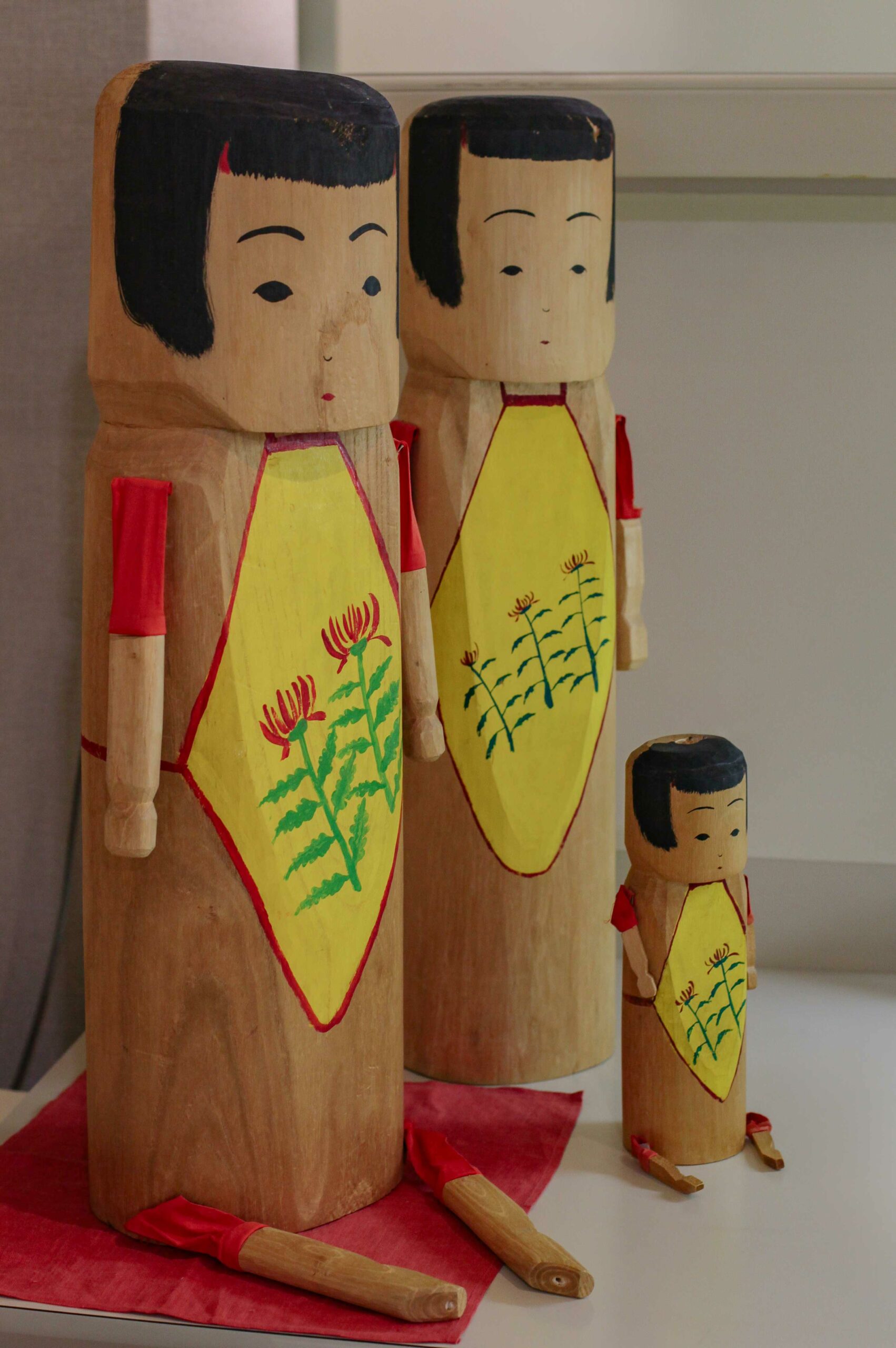

Sometimes, getting to know the people of a nation can be difficult. There are language barriers, cultural differences, and limitations on time that prevent longer-term exploration. Perhaps one of the best ways to connect with any culture on a deeper level is to experience and learn about the objects and artefacts made by the hands of its people. There’s a universality in the things that humans create. Toys carved from wood by a grandfather for his grandchildren, or rush mats woven by mothers and aunts for the homes of their descendants are relatable to all of us. Our differences are made smaller by the commonality of handmade objects, which transmit sentiments and experiences that bridge the gaps between disparate groups of people. Knowing the crafts of Kumamoto will bring visitors closer to the heart and soul of the region, and invite them to enjoy the character and charm of its people.

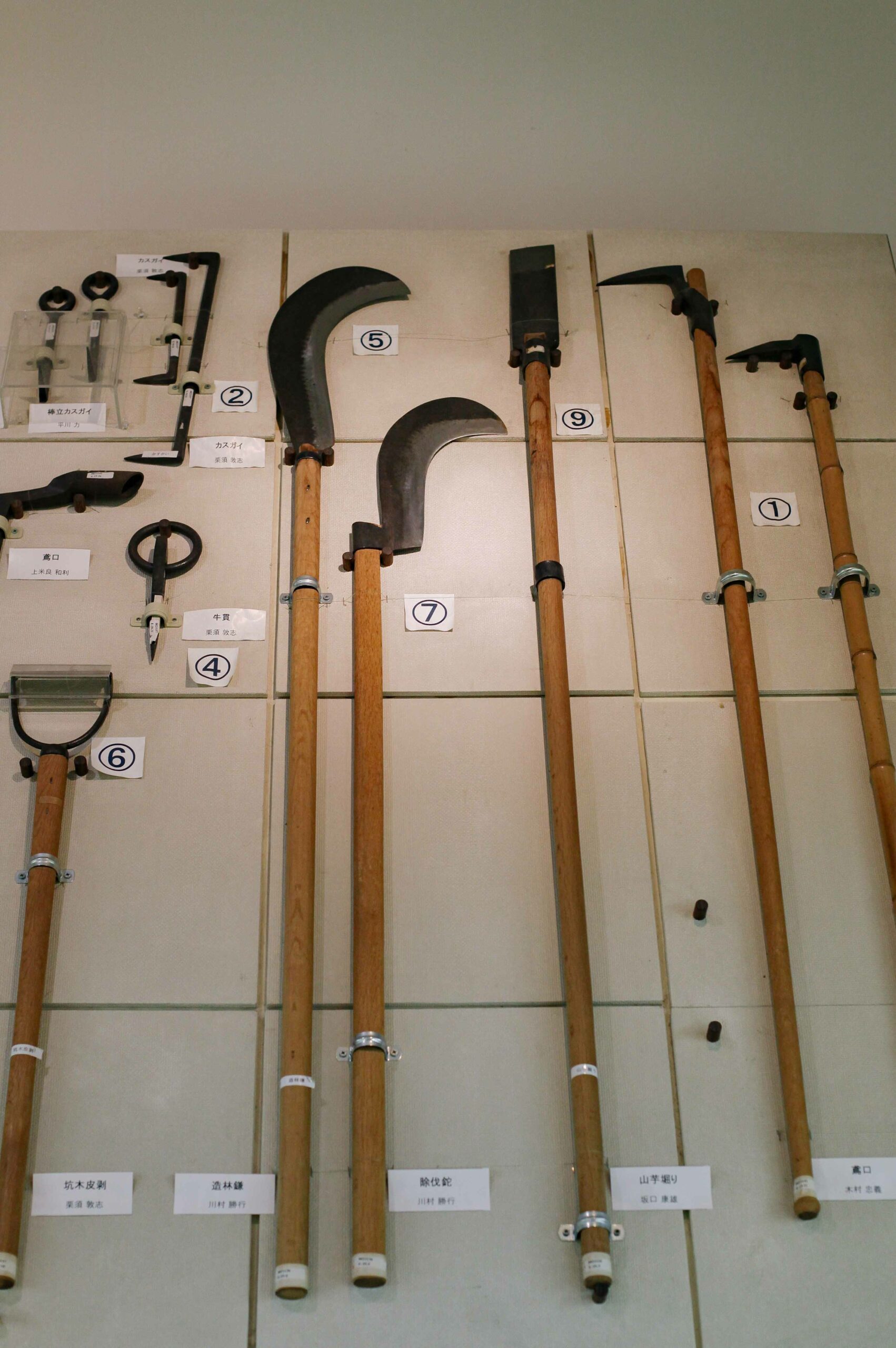
Access: The Kumamoto Prefectural Traditional Crafts Centre is conveniently located right next to Kumamoto Castle, as detailed here. It’s also a short walk from other sites in Kumamoto’s culture district, including the Kumamoto Prefectural Museum of Art (here) and Kumamoto City Museum. From JR Kumamoto train station, take the ‘A-Line’ tram, alighting at Kumamoto Castle/City hall and walk along this route.
Name: Kumamoto Prefectural Traditional Crafts Centre
Address: 3-35 Chibajomachi, Chuo Ward, Kumamoto, 860-0001, Japan
Open: 9:00am – 5:00pm (last entry 4:30pm). Closed on Mondays.
Admission: ¥210
Website: https://kumamoto-guide.jp/en/spots/detail/127
Japanese only: https://kumamoto-kougeikan.jp/
Additionally: https://kumamoto-guide.jp/culture/en/kougei/
Post by Japan Journeys.




